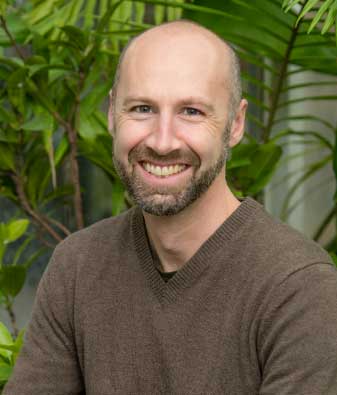Consider long-term effects before employing 'genetic welding' in natural populations: U of T expert

(photo by CRAFTSCI/Science Photo Library/Getty Images)
Published: April 25, 2023
With CRISPR-Cas9 technology – a specific and versatile gene editing technology that can be used to modify, delete or correct precise regions of DNA – humans can now rapidly change the evolutionary course of animals or plants by inserting genes that can easily spread through entire populations.
In an opinion paper published recently in the journal Trends in Genetics, University of Toronto evolutionary geneticist Asher Cutter says we must scientifically and ethically scrutinize the potential consequences of this “genetic welding” before we put it into practice.

“The capability to do genetic welding has only taken off in the last few years, and much of the thinking about it has focused on what can happen in the near term,” says Cutter, a professor in the department of ecology and evolutionary biology in the Faculty of Arts & Science.
“Ethically, before humans apply this to natural populations, we need to start thinking about what the longer-term consequences might be on a time scale of hundreds or thousands of generations.”
In classical Mendelian genetics, genes have a 50-50 chance of getting passed from parent to offspring – but this isn’t always the case. In a natural phenomenon known as “genetic drive,” some genes are able to bias their own transmission so that they are much more likely to be inherited.
Genetic welding is the human-mediated version of this: introducing genes that have an unfair advantage when it comes to heritability in natural populations. Because these genes spread easily and rapidly through populations, they result in much faster evolutionary change than the usual slow plod that we see from natural and artificial selection.
In contrast to natural selection, genetic drives and genetic welding can perpetuate genes that don’t necessarily benefit the organisms that carry them – making them an attractive potential method to control problematic and invasive disease-bearing species.
For example, genetic welding has been proposed as a tool to control disease-bearing mosquito populations and invasive species. It could also be used to genetically engineer endangered species to be resistant to infectious pathogens that threaten them with extinction.
“It raises the question of how much should humans intervene into processes that are normally beyond our control,” Cutter says.
“If ethicists, medical practitioners and politicians decide that it is acceptable in some cases to edit the ‘germline’ of humans – the population of cells that pass on their genetic material to offspring – then that would open the possibility that genetic welding could be used as a tool in that regard. This would open a much bigger can of worms by virtue of the fact that genetic welding could change the entirety of a population or species – not just a few individuals that elected to have a procedure.”
Though it might be difficult to experimentally assess the long-term implications of genetic welding, Cutter says that thought experiments, mathematical theory, computer simulations and conversations with bioethicists could all play important roles, as could experiments in organisms with short lifespans and rapid reproduction.
Cutter’s research is supported by the Natural Sciences and Engineering Research Council of Canada.
With files from Cell Press



